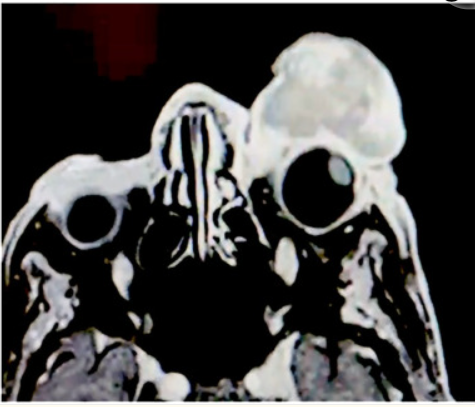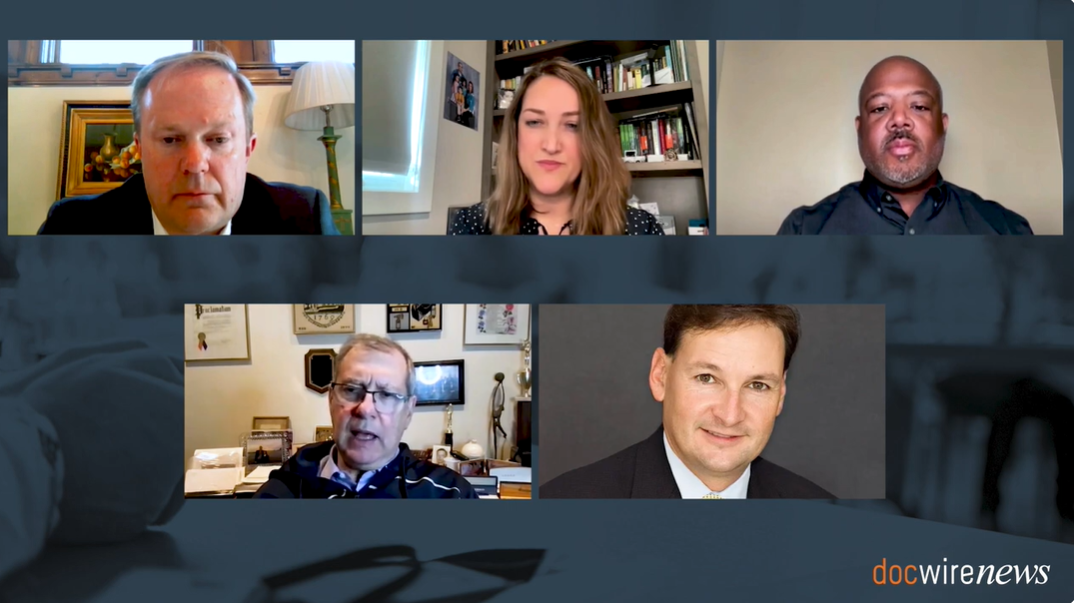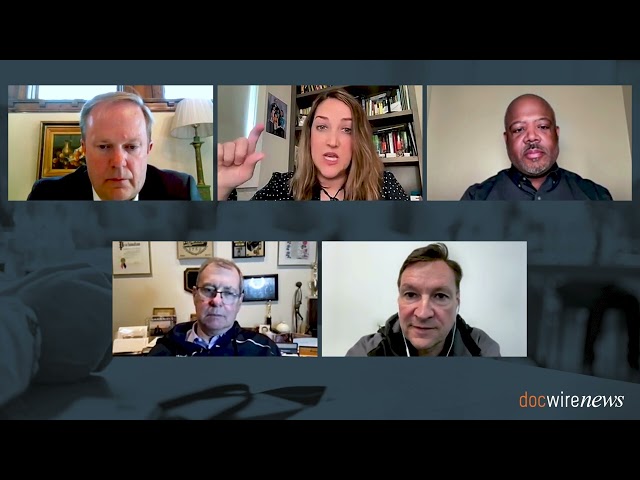Study Shows Positive Data for Implantable Telescope for Late-Stage Age-Related Macular Degeneration
By Thomas Ruggia, Rob Dillard - Last Updated: February 18, 2025Recently, Samsara Vision announced the publication of positive intermediate-term visual and safety outcomes of the SING IMT® (Smaller-Incision New-Generation Implantable Miniature Telescope) in patients six months post-surgery, published in Heliyon.
The researchers found that SING IMT implantation improved distance and near vision in patients with late-state, age-related macular degeneration (AMD), with a low impact on the corneal endothelium cell density and manageable safety outcomes.
Overall, the study confirms earlier evidence that AMD patients with blocked central vision due to an unpreventable form of central blindness are regaining functional vision following telescope implantation, with nearly all able to read after completing required vision therapy. DocWire News spoke with Thomas Ruggia, President and CEO, Samsara Vision, about this novel innovation.
DocWire News: What are the biggest challenges associated with treating patients with age-related macular degeneration?
Thomas Ruggia: Macular degeneration is a disease that affects so many people. More than 200 million people around the world today have at least some form of the disease, whether that be early stage, intermediate stage, or late stage AMD. Patients with early stage AMD modify their diet and lifestyle. That’s really hard in most cases, believe it or not, when patients have to do it themselves, they often don’t.
Then, in the intermediate stage of the disease, sometimes patients can get a condition known as wet AMD or neovascular AMD. Then there are a number of injections that can quell the proliferation of wet AMD.
But the disease progresses in the background, and many patients, in fact, 11 million patients today live with late stage age-related macular degeneration. These are patients with vision loss that is progressed over time as they become legally blind in most cases. Their lifestyle is limited by this central blindness.
AMD, as you know, takes away the central vision, not the peripheral vision, which can be even more frustrating for people as they can sort of navigate their world, but then they can’t focus in on the things that are very meaningful. They can put themselves at risk for falls and big picture, but also can’t read books, can’t read nutrition labels, can’t go grocery shopping, restaurants and menus, and seeing faces and knowing who’s talking to you. All of those things can’t be done by people with late stage AMD.
In the United States, geographic atrophy, which is a form of late stage AMD, can be slowed by two new products. One is Izervay and one is Syfovre. Those two products are complement inhibitors that don’t improve patient’s vision or slow the vision loss, but they do slow the lesion size or the disease progression in the back of the eye.
In Europe, both of those products are not available. One was rejected, one was withdrawn. European patients are left with very limited options. We come in with Samsara Vision and our smaller incision, new generation, implantable miniature telescope is an intraocular telescope, an option that is an alternative to an intraocular lens during cataract surgery. Patients going through cataract surgery that have late stage AMD can be implanted with the SING IMT and gain vision back. Much like the vision that is gained back in wet AMD, these patients can get, we saw in our six month publication, that more than half experienced three lines of vision gain, and they can get a significant amount of reading back, which is really exciting for us.
DWN: Talk to us about the company Samsara Vision and its mission.
TR: At Samsara Vision, we’re on a mission to bring vision and freedom back to patients who are suffering from late stage AMD. These patients are underserved in the sense that there are no products available for them today. I took over four years ago. I’m a very patient-centric person, and my team that we’ve hired, also very patient-centric. Our mission is to bring this technology to as many needy patients [as possible]. Like I said, there’s 11 million out there, who in fact, could benefit from our technology today. We’re moving to make the SING IMT available in even more countries.
We’ve done surgeries in 19 different countries to date. More than 115 surgeons have done at least one case and more than four, today, actually, we crossed the 420 surgeries have been done with the SING IMT, bringing all this vision and freedom back to patients. That’s the company.
SING IMT is currently available commercially in Europe and in the United States. We’re undergoing a supplement to our PMA that we have for a predecessor technology. We’re in trial in the United States. I anticipate launching in the United States commercially in 2027.
DWN: Talk to us about the methodology and key findings of the study which assessed this device.
TR: Thirty five patients in two centers in Italy had cataracts, came in to get a cataract surgery, and were given the SING IMT instead of an intraocular lens. They were implanted with an intraocular telescope. These patients were followed for over six months. We looked at objective vision improvement and best corrected distance visual acuity. We also looked at functional outcomes. The ability to read was a secondary measure that we had. A safety measure was endothelial cell density loss in the cornea. In the cornea, loss of endothelial cells in a progressive fashion could lead to complications that are high risk for corneal disease. We wanted to monitor that at six months as well.
I’m happy to report that vision gains were outstanding, almost 100%; 97% had at least one line of vision gained, with more than half of the patients experiencing three lines of vision improvement on the eye chart. If you’re looking, if you’re watching this, above my right shoulder, you can see an eye chart just like you would in your doctor’s office. These patients came in maybe like seeing the big E or even worse than that, and then saw three lines at least, or had more than half, saw three lines better. We also had a large proportion of the patients experiencing four lines of vision gain. From that, we know that we had a profound effect on distance vision.
But the headliner from this study, I think for me, is that 28% of patients came into the trial reporting the ability to read, and that after the six months of surgery, and then the rehab, six sessions with a rehab therapist post-operatively, 97% of the patients reported the ability to read. From 28% pre-surgery to 97%, that’s a drastic improvement in functional outcomes. It shows the ability for patients to get back that freedom that they had prior to experiencing late stage AMD.
On the safety measure, we were consistent with regular cataract surgery. In fact, we did not progress beyond what’s considered natural history for endothelial cell density loss post-cataract surgery. We saw less than 15% ECD loss, 11% ECD loss at six months was reported, and that traveled up from 9% at the first month post-op. We did not see progressive endothelial cell density loss beyond what we see in standard cataract surgery. That was very good. That’s an important safety measure for the future of the company and the future of the implantation of the SING IMT.
These 35 patients in two centers were led by great doctors, including Professor Mario Toro, Professor Alfonso Savastano, and Professor Stanislao Rizzo, as well as Faustino Vidal Aroca from Samsara Vision, and Paul Asasso from Gemelli Hospital. Great, great participants, great centers, great patient care, and these results are just reinforcing what we know about this technology; that it can be a game changer in ophthalmology. It’s becoming a standard of care for late stage AMD. We do believe that that will continue. With these results, surgeons can be confident that their patients will experience these level of results as well.







 © 2025 Mashup Media, LLC, a Formedics Property. All Rights Reserved.
© 2025 Mashup Media, LLC, a Formedics Property. All Rights Reserved.